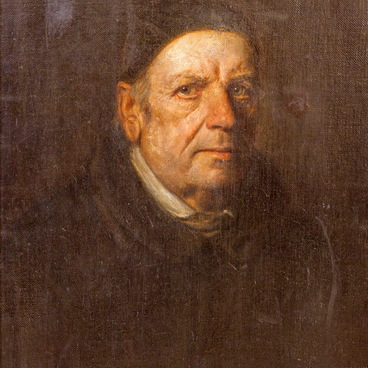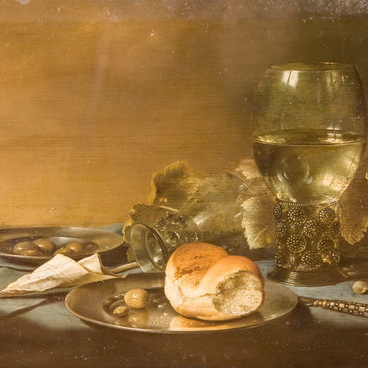“Christ” by Michael Ostendorfer is a rare example of German Renaissance painting. This is the artist’s only painting housed by Russian museums. Until 1870, it belonged to the private collection of Karl Morgenstern who left it to the drawing school at the University of Tartu. Later, it entered the collection of the Voronezh Art Museum.
Michael Ostendorfer was a German architect, painter, graphic artist, and xylographer who belonged to the Danube school. He created portraits, topographic diagrams, maps, and woodcuts for Protestant literature. The time of his birth was estimated based on the fact that he became an acknowledged artist in 1519. Since most painters reached this status at the age of 25, it was assumed that Michael Ostendorfer was born in the 1490s.
Ostendorfer studied under the German painter Albrecht Altdorfer. Both artists contributed to developing the cult image of the Schöne Maria, and to building and painting the chapel of the Virgin Mary in Regensburg. It is evidenced by two of Ostendorfer’s woodcuts: in one of them, he depicted a temporary wooden church surrounded by pilgrims, and in another one — the design of the Stone Church of the Beautiful Virgin Mary. Michael Ostendorfer was also a court painter of Frederick II, Count Palatine, a military commander, and a diplomat who served the Habsburg dynasty.
“Christ” by Michael Ostendorfer is characterized by exquisite workmanship with the elegant lines of Christ’s profile, the delicate drawing, and the vibrant and clear colors. In this painting, the artist used the noble shades of golden and black. Ostendorfer depicted a perfect face with regular features, calm eyes looking into the distance, and a long neck. The artist used this image to express his idea of the perfect human being. Although Michael Ostendorfer himself had a life full of hardships and adversities, in the portrait of Christ, the painter avoided any sorrow and suffering typical of the traditional depiction of Jesus. At the top of the painting, there is an inscription in Latin that uses gilded Antiqua letters and is written in the traditions of ancient poetry.
Michael Ostendorfer was a German architect, painter, graphic artist, and xylographer who belonged to the Danube school. He created portraits, topographic diagrams, maps, and woodcuts for Protestant literature. The time of his birth was estimated based on the fact that he became an acknowledged artist in 1519. Since most painters reached this status at the age of 25, it was assumed that Michael Ostendorfer was born in the 1490s.
Ostendorfer studied under the German painter Albrecht Altdorfer. Both artists contributed to developing the cult image of the Schöne Maria, and to building and painting the chapel of the Virgin Mary in Regensburg. It is evidenced by two of Ostendorfer’s woodcuts: in one of them, he depicted a temporary wooden church surrounded by pilgrims, and in another one — the design of the Stone Church of the Beautiful Virgin Mary. Michael Ostendorfer was also a court painter of Frederick II, Count Palatine, a military commander, and a diplomat who served the Habsburg dynasty.
“Christ” by Michael Ostendorfer is characterized by exquisite workmanship with the elegant lines of Christ’s profile, the delicate drawing, and the vibrant and clear colors. In this painting, the artist used the noble shades of golden and black. Ostendorfer depicted a perfect face with regular features, calm eyes looking into the distance, and a long neck. The artist used this image to express his idea of the perfect human being. Although Michael Ostendorfer himself had a life full of hardships and adversities, in the portrait of Christ, the painter avoided any sorrow and suffering typical of the traditional depiction of Jesus. At the top of the painting, there is an inscription in Latin that uses gilded Antiqua letters and is written in the traditions of ancient poetry.


